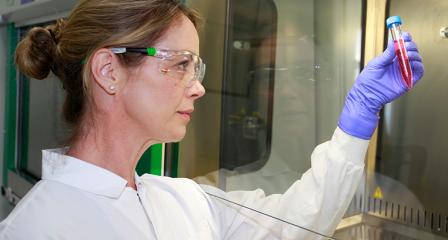Don’t have an account?
Select the donation type you’d like to make

We have to identify emerging risks, and develop ways to measure and control new risks. We monitor the emergence of diseases in Australia, develop and implement testing, and explore ways to eradicate them from the blood supply.
Infectious diseases aren’t the only risks related to blood transfusion. Studies are underway to examine how donor variation, blood processing and storage can affect the clinical outcome for patients who receive transfusions. This work will lead to safer blood products and improved transfusion safety.
Climate change and people’s ease of movement allow new viruses to spread easily across the globe, as recently shown by COVID19. Researchers at Lifeblood track the appearance of new diseases by testing samples from across Australia. In recent years, they’ve monitored Zika, Chikungunya, hepatitis E, Dengue fever, Q-fever and Babesia viruses. Their studies provide information to help us select healthy donors and decide when to introduce new tests.
Pathogen Inactivation Technologies (PI) can improve blood safety by inactivating bacteria and viruses in blood products using ultraviolet light. Studies are underway to find out if these systems can kill viruses which may be emerging threats in Australia.
Transfusion-Related Acute Lung Injury (TRALI) is a rare complication of blood transfusion. Patients with TRALI have breathing difficulties and low blood oxygen following a transfusion. We're studying the link between blood components’ storage conditions and TRALI. This research will help us understand the mechanisms of TRALI and reduce its incidence using sheep as a model to mimic the human condition.
Blood transfusion can lead to complications in some patients. We want to know how a patient’s own blood cells respond to transfusion by making a variety of molecular signals. These signals may contribute to some of the poor outcomes from transfusions.
Babies whose blood contains the RhD antigen (Rh positive) can suffer from life-threatening anaemia (known as HDFN) if their mother doesn't have the RhD antigen (Rh negative). Doctors currently protect unborn babies from HDFN by injecting all Rh negative mothers with Anti-D antibodies during pregnancy. We've developed a diagnostic test which uses a blood sample from the mother to check the blood type of her foetus. This testing means we can reduce the use of expensive Anti-D. Our researchers are working on a cost-benefit analysis, and extending the test to blood groups other than RhD.